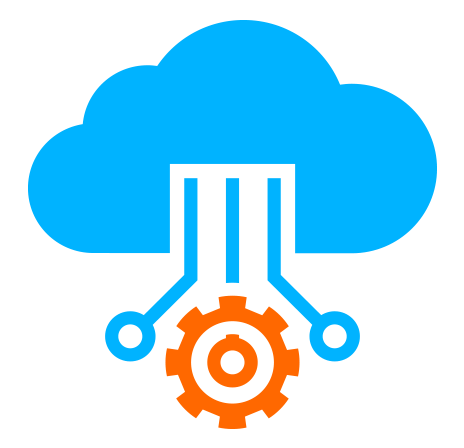 Server
Colocation
Server
Colocation
 CDN
Network
CDN
Network
 Linux Cloud
Hosting
Linux Cloud
Hosting
 VMware Public
Cloud
VMware Public
Cloud
 Multi-Cloud
Hosting
Multi-Cloud
Hosting
 Cloud
Server Hosting
Cloud
Server Hosting
 Kubernetes
Kubernetes
 API Gateway
API Gateway

GPU acceleration is essential for many AI workloads because it dramatically speeds up the training and inference of complex AI models through parallel processing. GPUs enable faster development, deployment, and scalability of AI applications, making them critical in modern AI systems such as deep learning, natural language processing, computer vision, and scientific simulations.
GPU acceleration refers to using Graphics Processing Units (GPUs) to speed up computation-intensive tasks by exploiting their architecture optimized for parallel processing. Unlike traditional CPUs that process tasks sequentially, GPUs contain thousands of smaller cores capable of executing many operations simultaneously, making them highly suitable for the matrix and vector calculations common in AI and machine learning workloads.
AI, particularly deep learning, involves training models on large datasets with millions or billions of parameters. This training requires extensive numerical computations that can take weeks on CPUs. GPUs drastically reduce this time by performing multiple calculations in parallel, enabling faster experimentation and iteration. For AI inference (model execution), GPUs also enable real-time responses, crucial for applications like autonomous vehicles and interactive AI agents.
Furthermore, GPUs offer greater energy efficiency and scalability for AI workloads compared to CPUs, reducing costs and environmental impact over time. While specialized AI accelerators (such as NPUs or TPUs) are emerging, GPUs remain versatile and widely accessible for various AI tasks.
|
Use Case |
Description |
Importance of GPU Acceleration |
|
AI Training & Inference |
Training complex neural networks and running inference in real-time applications |
Accelerates training from weeks to days/hours; enables real-time inference |
|
Natural Language Processing |
Powering chatbots, translation services, and language models |
Processes vast language datasets rapidly for timely responses |
|
Computer Vision |
Image recognition, video analysis, and augmented reality |
Processes image and video at high throughput for accuracy and speed |
|
Scientific Simulations |
Molecular modeling, physics simulations, climate forecasting |
Handles large-scale simulations with parallel data processing |
|
Medical Imaging & Healthcare |
MRI analysis, AI diagnostics, drug discovery |
Enables quick analysis and better patient outcomes |
|
Gaming & Media |
3D rendering, video encoding, and virtual reality |
Supports high-quality graphics and immersive experiences |
|
Cryptocurrency Mining |
Blockchain validation and cryptographic computations |
Efficiently handles cryptographic algorithms at scale |
GPU cloud computing platforms like Cyfuture Cloud specialize in providing scalable, cost-effective GPU resources to fulfill these use cases without the need for expensive on-premises hardware.
While GPUs hold a dominant role in AI acceleration, specialized AI accelerators such as Tensor Processing Units (TPUs) and Neural Processing Units (NPUs) offer improvements in energy efficiency and task-specific throughput. These chips are designed specifically for AI workloads, whereas GPUs are more versatile and widely supported within existing AI software ecosystems.
For smaller or less complex AI models, CPUs can sometimes suffice, especially for inference tasks with lower latency requirements, but GPUs remain essential for most large-scale, training-intensive AI projects.
Q1: Can AI run without GPUs?
Yes, AI can run on CPUs, but it will be much slower, especially for training large models. GPUs dramatically reduce processing time and enable real-time inference, making them the preferred choice for modern AI workflows.
Q2: Are GPUs only for training AI models?
No, GPUs accelerate both training and inference. Training benefits from parallel calculation of gradients, while inference benefits from fast, low-latency execution of AI models.
Q3: Are GPUs expensive?
GPUs can be costly upfront, but cloud GPU computing reduces this barrier, offering scalable and pay-as-you-go models. The savings in time and efficiency often outweigh the hardware costs.
Q4: What industries benefit most from GPU acceleration?
Industries such as healthcare, gaming, scientific research, finance, autonomous vehicles, and media production leverage GPU acceleration for AI applications.
GPU acceleration has become a cornerstone technology for artificial intelligence due to its ability to perform massive parallel computations efficiently and quickly. It enables breakthroughs in deep learning, natural language processing, computer vision, and scientific simulations, among other fields. Although emerging specialized AI accelerators continue to evolve, GPUs remain versatile and essential tools in the AI landscape. For organizations seeking to leverage AI’s full potential without heavy upfront hardware investment, cloud-based GPU solutions represent the future of scalable, efficient AI computing.

Let’s talk about the future, and make it happen!
By continuing to use and navigate this website, you are agreeing to the use of cookies.
Find out more


